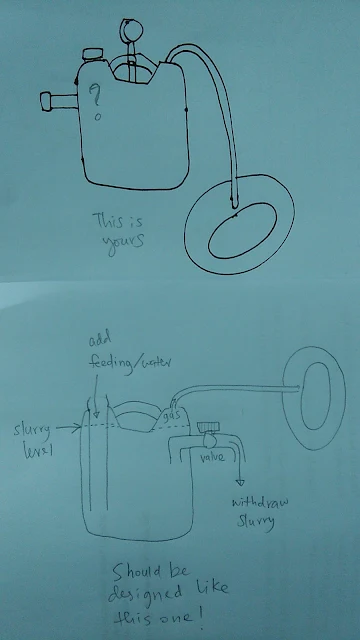After several years of operating biodigester, the
upper layer is full of floating scum. Middle layer is just digestate
liquid. The most bottom is where the sediment reside. During
maintenance, you may want to take out both layer of semi solid (scum and
sediment) so you can start new fresh.
Accumulated scum if not removed, when they are piled up so much will block your gas outlet. This event may cause the biogas pushing down the digestate out towards the feeding inlet. So its good to do spring cleaning after sometime operating.
The liquid digestate can be reuse since still containing microbes and as long as the pH still the same.










